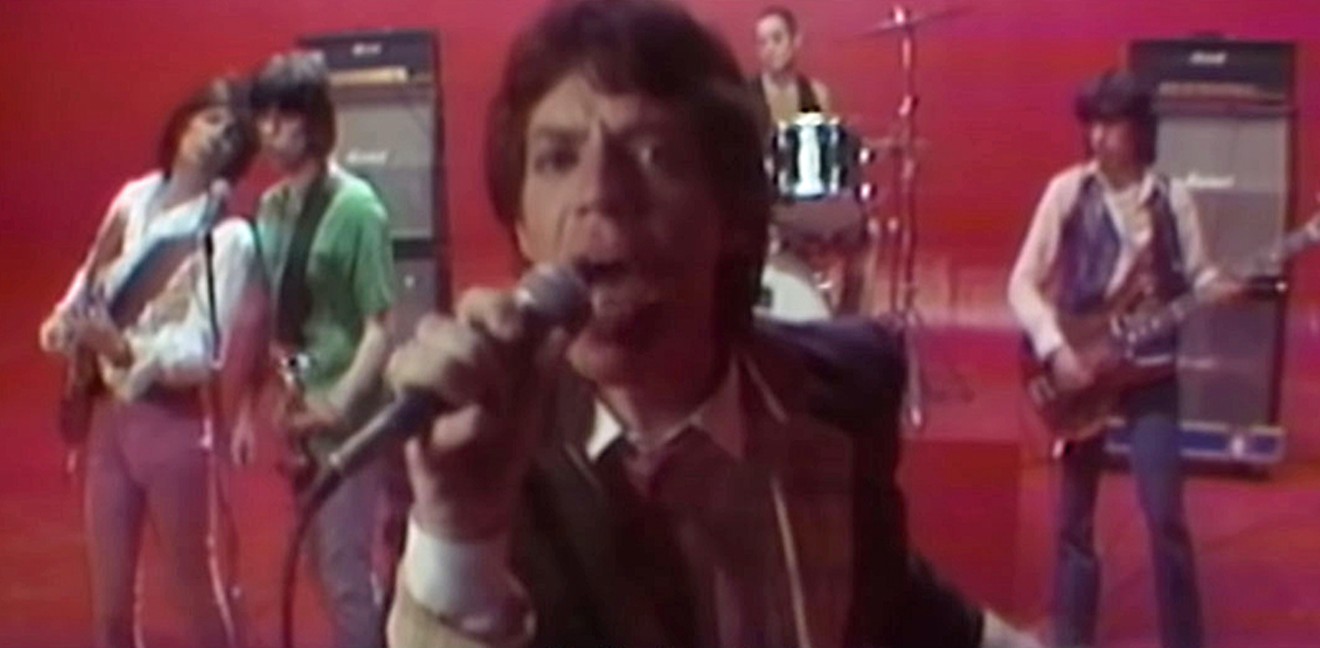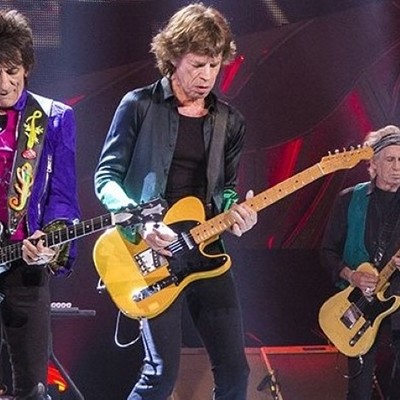Though it was a bit past its prime in terms of recruitment, in May 1979, the KISS Army was still a very fit and formidable fighting force. But Generals Stanley and Simmons were facing some serious AWOL and desertion in the ranks when the latest single from the costumed hard rockers hit the store shelves. After all “I Was Made for Lovin’ You” was a disco song.
Just a year earlier, a similar outcry reached the ears of Mick Jagger and Keith Richards, as “The World’s Greatest Rock and Roll Band” put forth unto the masses “Miss You,” a disco song.
With the disco dance sensation sweeping the nation, other dyed in the wool rockers crossed the boundaries of intergenre relations including Rod Stewart (“Do Ya Think I’m Sexy?”), Queen (“Another One Bites the Dust”), Elton John ("Philadelphia Freedom"), proggers the Alan Parsons Project ("I Wouldn't Want to Be Like You"), and new wave rockers Blondie (“Heart of Glass”).
Hell, even the hirsute Grateful Dead put down their bongs long enough to boogie on the floor with “Shakedown Street.”
And the intention was obvious: These acts wanted a hit, even if it meant possibly alienating a large segment of their audience.
But the disco genre’s time at the top was already coming to a close. Their brief intermingling is the subject of Steven Blush’s When Rock Met Disco: The Story of How the Rolling Stones, Rod Stewart, KISS, Queen, Blondie, and More Got Their Groove on in the Me Decade (272 pp., $24.95, Backbeat Books).
Blush provides a solid backstory on the origins, influence, and impact of disco, how important the 12-inch single was to the genre in terms of club play, and how everyone from Broadway Belter Ethel Merman and ‘60s crooner Bobby Vinton (“Disco Polka!”) to the Sesame Street Muppets put out disco records.
Perhaps the most unique tidbit that Blush uncovers is when he talks about the medical malady known as “Disco Finger.” It seems that researchers at Johns Hopkins Hospital actually studied the injury caused by constant finger snapping while dancing. One 17-year-old male subject did it so much that he developed calluses, which then cracked and became infected.
Disco “fever” seemed like a temporary ailment by comparison. And there were plenty of places to get Disco Finger. Blush writes that in 1979 there were an estimated 20,000 discothèques across the United States.
That said, as Blush notes, people who didn’t like disco weren’t just mildly put off by it, they hated it. He details a dizzying number of anti-disco events, organizations, and concerts held while the genre was still in power.
In a 2023 sociological lens, the prevailing theory is that anti-disco sentiment was largely fueled by white male rock fans’ disdain for music made and performed by Gays, Blacks, and Hispanics. While there is some truth to that, Blush doesn’t peg it as the sole reason. After all, disco’s greatest fictional creation, John Travolta’s strutting Tony Manero from Saturday Night Fever, was a working-class white guy.
The ”Death to Disco” and “Disco Sucks” movement reached its infamous peak in July 1979 at Chicago’s Comiskey Park, Blush writes. As a way to increase attendance, local DJ Steve Dahl promoted “Disco Demolition Night” in which baseball (or rock) fans were encouraged to bring disco records in exchange for a low 98-cent ballpark ticket.
The records would then be gathered in a pile and detonated on the field in between two games of a double header. The promotion worked. More than 45,000 crammed into the stadium, with another 12,000 kept outside the gates.
However, the already amped-up on cheap beer young men then went nuts and poured onto the baseball diamond and in the midst of the frenetic activity, lit their own bonfires and tore up the field. It forced the cancellation of the second game and a White Sox forfeiture. Riot police were called in.
On the downside, When Rock Met Disco seems quite padded. The pages have large margins and line spaces; the text is interspersed with song lyrics and quotes about disco from performers (the vast majority are decades old). And the short blurbs about selected songs, source list, and index eat up a chunk of the page count.
It’s a bit disappointing coming from the same writer who produced the detailed and informative New York Rock, as in this entire book (of which the actual rockers-going-disco portion is only a part of) could have been a long chapter in that one.
Blush also makes some observations that are head-scratching, treacly, or questionable. It may be unfair to cherry pick, but pronouncements like “In disco, women expressed their sensuality in ways rarely seen” or “Every scene and style [since disco] has been a reaction to, or an affirmation of disco’s rhythms and hedonistic lifestyle” and “a civilization bellowed with each pulsating beat and hip swivel” may elicit more groans than grooves from readers.
In the end, disco did die. But it certainly has morphed into and influenced a lot of today’s pop and dance music. And KISS and the Rolling Stones? Their “disco songs” are still in their set lists in 2023, with their entire audience bellowing and whooping along. And maybe headed for a case of Disco Finger.
Support Us
Houston's independent source of
local news and culture
account
- Welcome,
Insider - Login
- My Account
- My Newsletters
- Contribute
- Contact Us
- Sign out

Even "The World's Greatest Rock and Roll Band" - the Rolling Stones - went disco and mined chart gold.
Screen shot from the video for "Miss You."
[
{
"name": "Related Stories / Support Us Combo",
"component": "11591218",
"insertPoint": "4",
"requiredCountToDisplay": "4"
},{
"name": "Air - Billboard - Inline Content",
"component": "11591214",
"insertPoint": "2/3",
"requiredCountToDisplay": "7"
},{
"name": "R1 - Beta - Mobile Only",
"component": "12287027",
"insertPoint": "8",
"requiredCountToDisplay": "8"
},{
"name": "Air - MediumRectangle - Inline Content - Mobile Display Size 2",
"component": "11591215",
"insertPoint": "12",
"requiredCountToDisplay": "12"
},{
"name": "Air - MediumRectangle - Inline Content - Mobile Display Size 2",
"component": "11591215",
"insertPoint": "4th",
"startingPoint": "16",
"requiredCountToDisplay": "12"
}
]
KEEP THE HOUSTON PRESS FREE...
Since we started the Houston Press, it has been defined as the free, independent voice of Houston, and we'd like to keep it that way. With local media under siege, it's more important than ever for us to rally support behind funding our local journalism. You can help by participating in our "I Support" program, allowing us to keep offering readers access to our incisive coverage of local news, food and culture with no paywalls.
Bob Ruggiero has been writing about music, books, visual arts and entertainment for the Houston Press since 1997, with an emphasis on classic rock. He used to have an incredible and luxurious mullet in college as well. He is the author of the band biography Slippin’ Out of Darkness: The Story of WAR.
Contact:
Bob Ruggiero
Trending Music
- How Much Longer Can Classic Rock Rule the Roost?
- Top 10 Butt-Rock Bands of All Time
- Wang Chung Headline a Musical Time Trip to the '80s...and Land on the Moon!
-
Sponsored Content From: [%sponsoredBy%]
[%title%]

Don't Miss Out
SIGN UP for the latest
Music
news, free stuff and more!
Become a member to support the independent voice of Houston
and help keep the future of the Houston Press FREE
Use of this website constitutes acceptance of our
terms of use,
our cookies policy, and our
privacy policy
The Houston Press may earn a portion of sales from products & services purchased through links on our site from our
affiliate partners.
©2024
Houston Press, LP. All rights reserved.







